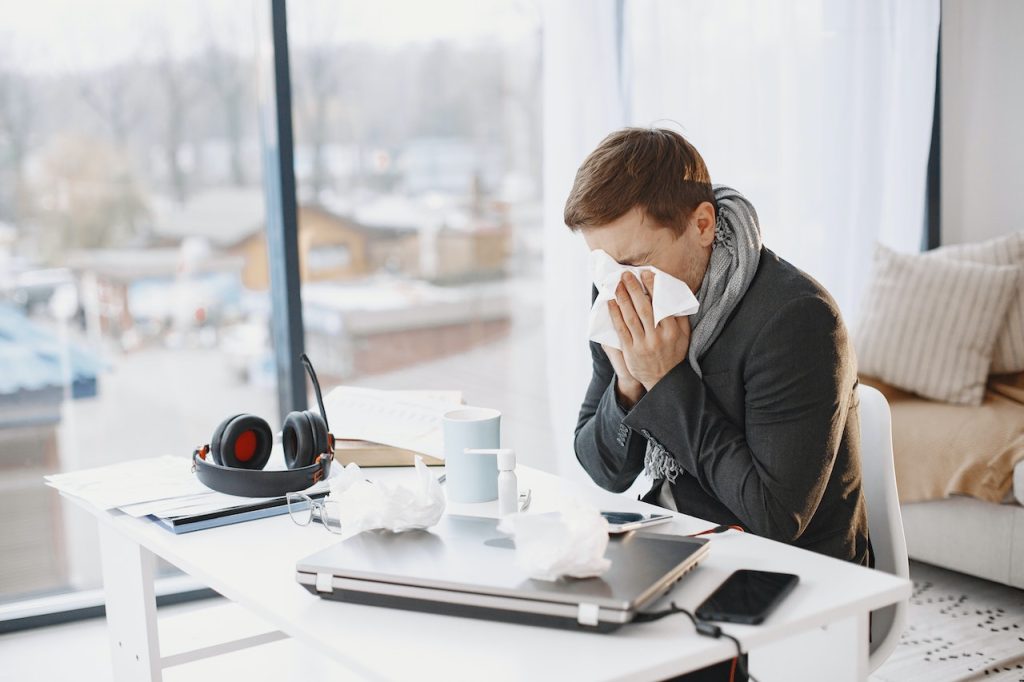Your house is your sanctuary where you find peace and comfort. But have you ever stopped to think that potential threats might be lurking within the familiar walls of your house? Often these menaces can wreak havoc on your body without you even realizing it. They can trigger allergies, aggravate asthma, or compromise your overall health. However, take a deep breath before thinking about wearing a hazmat suit upon entering the house.
Today, we will guide you about how your house might make you sick. We will also impart knowledge about how to tackle those pesky health hazards. With effective strategies, you can easily create a better living experience for yourself and your loved ones.
1. You have mold and mildew lurking in the house
Mold and mildew are the silent enemies lurking in your house’s dark and damp corners. So, bathrooms, basements, and poorly ventilated spaces are their ideal breeding grounds. Additionally, these unwelcomed intruders can also take up residence within the depths of your mattresses.
Mold and mildew are not just unsightly nuisances but also have various health implications. When inhaled, they can trigger multiple allergic reactions and respiratory problems.
The key to preventing mold and mildew growth lies in moisture control. Since areas like the bathroom and kitchen are prone to humidity, ensure proper ventilation through exhaust fans or opening windows.
Also, make sure your bedding and mattress is clean and dry. Moist bedding can increase humidity levels and create an environment conducive to mold growth. If your mattress is already infested with mold or mildew, take prompt action. Depending on the severity of the issue, you may consider calling professional mattress cleaning or replacing the mattress altogether. If buying a new mattress, consider Tempurpedic Mattress at The Mattress Factory. They are high quality and come with layers for additional support and comfort.
2. You have poor indoor air quality
The indoor air can teem with pollutants, irritants, and allergens that can potentially compromise your respiratory health. From microscopic dust particles to harmful gases, these unseen troublemakers can linger in the air and wreak havoc on your body with every breath you take. Therefore, it is essential to improve indoor air quality in your house.
However, before dealing with poor indoor air quality in your house, you must recognize its sources. Inadequate ventilation is a major culprit which prevents fresh air from circulating and allows pollutants to accumulate.
Using certain types of wood-burning stoves can also release fine particles, further compromising indoor air quality. Sometimes, seemingly harmless activities like burning candles also deteriorate indoor air quality.
There are many ways to tackle the problem of poor indoor air quality. One of the basic steps is ensuring proper ventilation in the house. Additionally, you can install air purification systems and ensure regular house cleaning.
3. You are overly using chemical cleaners
Most people trust chemical cleaners to remove dirt, grime, and germs, and why should they not? Chemical cleaners show clear results by doing their job accurately and efficiently.
However, chemical cleaners might introduce health risks into your living spaces while making your house sparkle. Often, chemical cleaners contain ingredients such as bleach, ammonia, formaldehyde, and volatile organic compounds (VOCs). Prolonged exposure to these chemical cleaners can cause health problems like skin and eye irritation and headaches.
You can avoid using chemical cleaners by reading product labels and opting for non-toxic, eco-friendly, or natural cleaning products. Particularly, you can look for ingredients derived from plant-based sources.
Additionally, you can make your own cleaning products at home with ingredients such as baking soda, lime, and vinegar.
When using chemical cleaners is indispensable, ensure proper ventilation in your cleaning area. Turn on exhaust fans and windows to help dissipate fumes and reduce chemical exposure.
Adopting safer cleaning alternatives and reducing your reliance on chemical cleaners can help you create healthier living environments for yourself and other family members.
4. Your tap is supplying more than just H2O
Water contamination is a real concern. So, it’s essential to be aware that your tap might be supplying more than just H2O.
Water contamination can occur due to several factors. Environmental pollutants, outdated infrastructure, and agricultural runoff can leech harmful substances into your water supply.
Consuming contaminated water has far-reaching consequences. Short-term effects of the exposure include gastrointestinal issues, nausea, and diarrhea. Long-term exposure can increase the risk of certain cancers and potentially cause organ damage.
To ensure you and your family consume safe water, arrange for regular tap water testing by a certified laboratory to determine its quality. Install a water filtration system that suits your specific needs. You can choose from various options, including activated carbon filters, reverse osmosis systems, and ultraviolet (UV) disinfection units.
In addition, be mindful of the potential sources of water contamination in your area. Stay informed about local industrial activities, agricultural practices, or infrastructure concerns. This knowledge can help you take appropriate precautions and seek additional filtration methods if necessary.
5. You are using air fresheners excessively
Most commercial air fresheners contain synthetic fragrances, aerosol propellants, and volatile organic compounds (VOCs). Prolonged exposure to these chemicals can cause allergies.
Opt for fragrances that contain natural ingredients to minimize the potential health risks associated with air fresheners. Or choose essential oils instead of synthetic fragrances.
Additionally, you can create your own air fresheners using natural ingredients like baking soda, vinegar, or citrus peels.
Instead of masking unpleasant smells with air fresheners, use fans or open windows to improve airflow and remove stagnant air in your living spaces.
6. You have dust mites
Dust mites are arachnids that feed on dead skin cells, a primary component of household dust. They are most commonly found in bedding, upholstered furniture, carpets, and stuffed toys.
While these minuscule creatures are invisible to the naked eye, they can substantially affect your health. Their feces and body parts contain proteins that can trigger allergic reactions in sensitive individuals.
Some preventive measures to mitigate dust mites’ impact include using dust mite-proof covers for your mattresses, pillows, and box springs. These specially designed covers create a barrier that prevents dust mites from penetrating your bedding.
Launder your sheets, pillowcases, blankets, and bed covers in hot water to effectively kill dust mites.
Use a HEPA filter vacuum cleaner to remove dust mites and their allergenic particles from carpets, upholstery, and curtains.
Conclusion
Your home may be harboring hidden health hazards that can make you sick. However, by being aware of these issues, you can take proactive steps to create a healthier environment. Steps like ensuring proper ventilation, regular maintenance, cleanliness, and staying about best practices can help create a healthy living environment.




